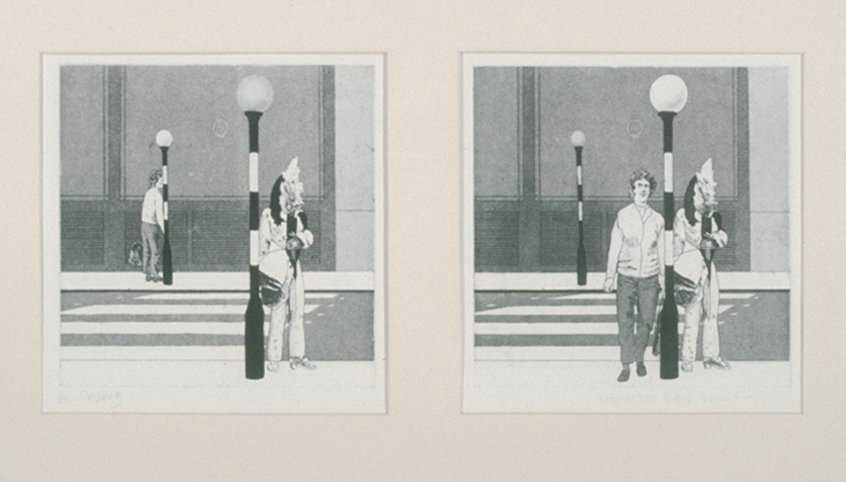Crossing presents two images side by side, of two women at a zebra crossing with street lamps. On the left, a woman carrying a bag nears the crossing on the opposite pavement, while a woman whose face is hidden by a bunch of flowers stands near the lamp post in the foreground to the right. The image to the right presents the same setting, with the difference that the woman holding the bag has now crossed the street. The diptych functions in a similar way to the stop motion technique in filmmaking, notably popularised in the 1890s by George Méliès for his on-screen magic tricks and illusions. Boyd & Evans have used the aquatint technique in order to create these black and white prints. The aquatint technique produces a grainy surface which enables a heightened sense of tone, similar to pencil drawing. The artists also make paintings and photographs. Speaking about their way of working with images, which they refer to as ‘narrative’, Boyd & Evans have stated:
We do not like being referred to as realists, whether hyper-, super-, photo-, or just plain. Reality is so different from a picture. There is never any confusion. 'Pictorial' would be better, 'representational' quite good enough.
